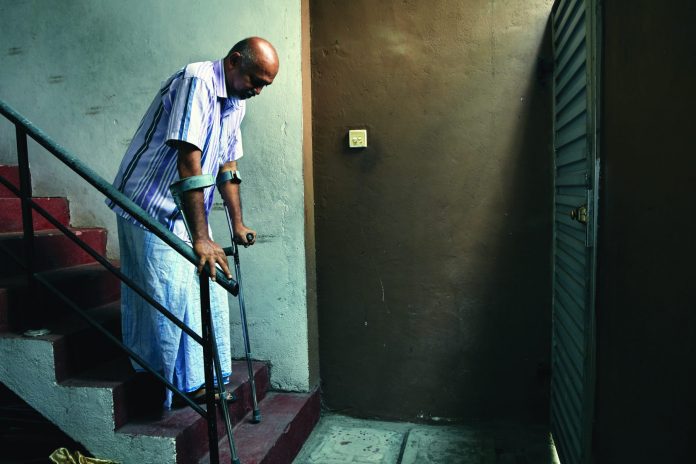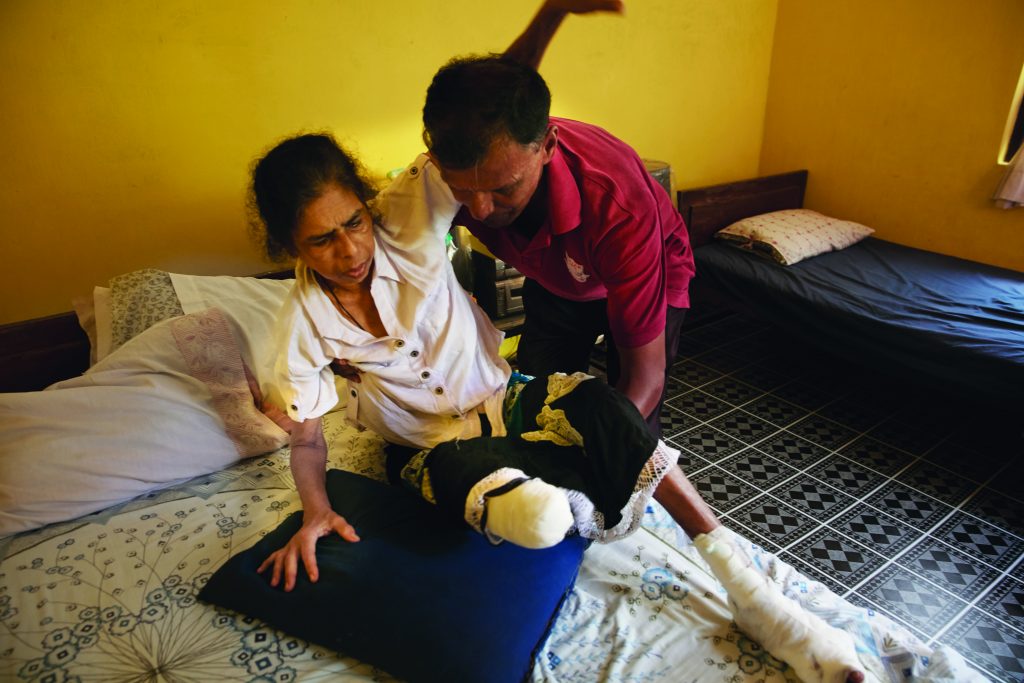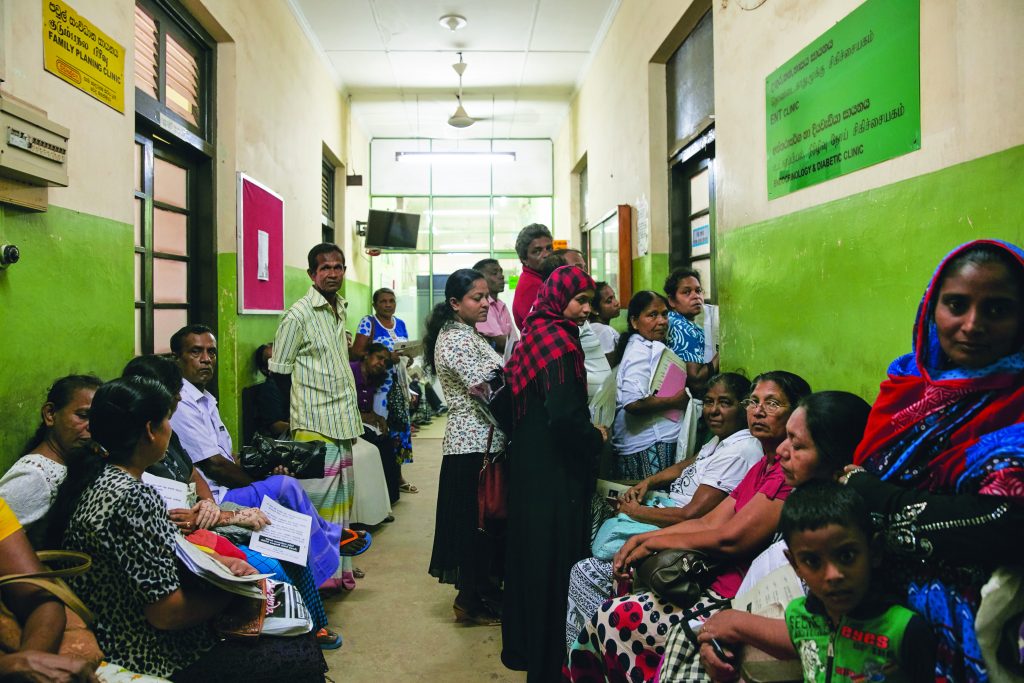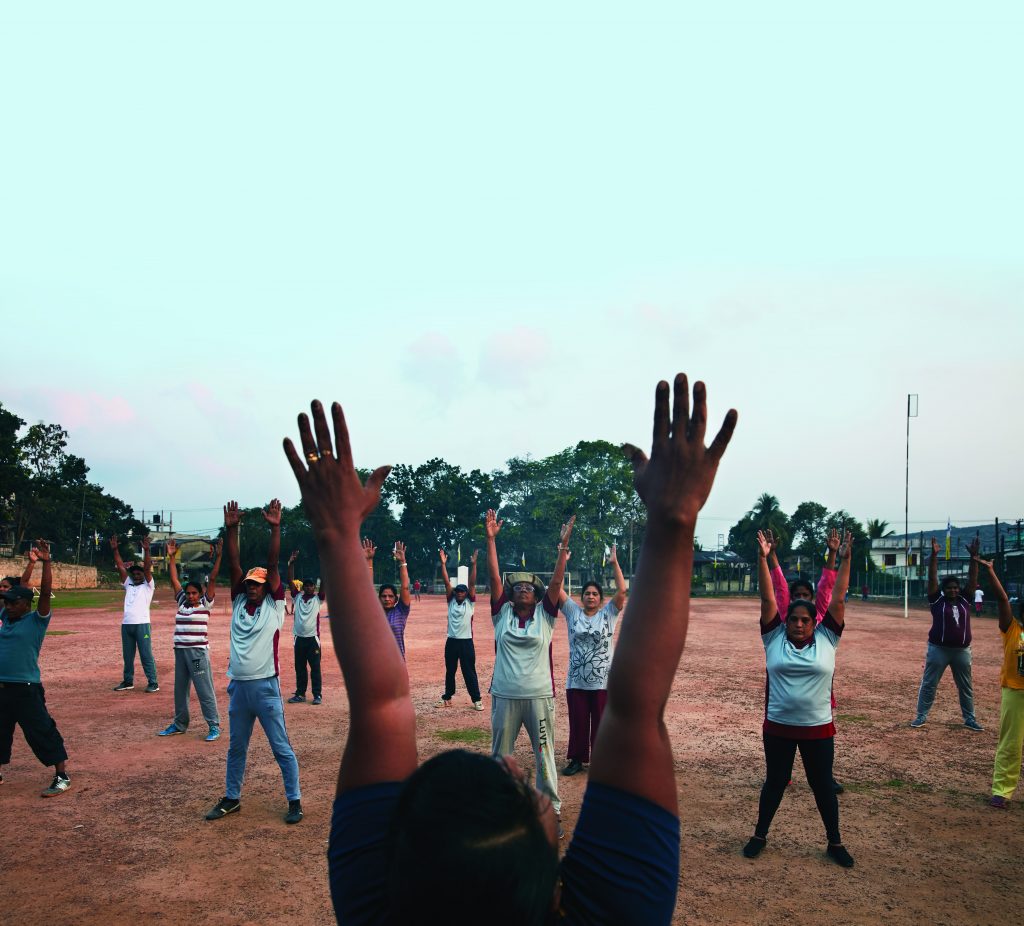
Sixty percent of the world’s diabetic population is Asian. And yet, many people don’t understand the dangers of this disease – and how to prevent it
Text Mangai Balasegaram
Additional reporting and photos Jesper Westley
The wound was still raw, but the agony of the amputation was not just in the physical pain for Mohamad Ziddig. Lying on his hospital bed at the Anuradhapura Teaching Hospital in Sri Lanka, a single leg protruding from the folds of his striped sarong, the 57-year-old said little. A heavy silence hung over the relatives circling his bed.
Two months ago, he arrived at the hospital with a foot ulcer. Now he had lost an entire leg to a disease he’d never heard of. A farmer and a breadwinner, his future was now uncertain. His despair was palpable.
His son disclosed the family had come to lift his spirits, but they too were concerned. Tending the crops and getting follow-up care would be a challenge. In a bed nearby to Mohamad’s, another family tragedy was unfolding.
Padma Dissanayake, 54, surveyed the sutured stump below her knee despondently. At least she had support from her husband – he had savings from his former job as a driver in Dubai, and he would carry her around. They had no wheelchair. But living in an area where care was limited, the future looked uncertain. Diabetes could in time rob her of her deteriorating sight.
Elsewhere in the packed ward, there were other casualties to diabetes: amputees missing toes or feet; nasty foot ulcers.
Sri Lanka’s three decade-long civil war is long over, but another alarming threat to life and limb has emerged – type 2 diabetes. It is a key cause of amputations, as well as blindness, nerve damage, skin ulcers, heart disease and chronic kidney failure.
Most cases are not diagnosed until complications develop or clinical symptoms are severe. That’s why it’s a silent epidemic.
– Dr Frank B. Hu, Harvard T.H. Chan School of Public Health

Diabetes inhibits the body’s ability to produce or use insulin, allowing sugar to slowly build up in the blood. Over time, it mercilessly destroys nearly every organ, even the gums that hold teeth.
Type 2 diabetes is now one of the most costly and fatal diseases globally – it kills more than AIDS, tuberculosis and malaria combined. And the epicentre of this epidemic is Asia and the Pacific. “Most cases are not diagnosed until complications develop or clinical symptoms are severe,” says Dr Frank B. Hu, professor of nutrition and epidemiology at the Harvard T.H. Chan School of Public Health. “That’s why it’s a silent epidemic.”
Treatment may then be too late, too difficult or too costly. A blister on the foot, which may go unnoticed due to the loss of sensation from gradual nerve damage, can turn into a life-threatening infection. In Sri Lanka, diabetes prevalence is at 10 percent; in China, it’s at 12 percent; in Malaysia, it’s at 18 percent, and in some Arabian Gulf states, it reaches up to 20 percent, according to the International Diabetes Federation (IDF). In several Pacific islands, the problem is colossal: Almost half of all adults in Western Samoa have diabetes. It’s “a huge public health problem” in the region, says Dr Hu.
Moreover, the epidemic is still at a “relatively early stage”, he adds. As it evolves, more people will develop serious complications. By 2040, an estimated 640 million people will have diabetes and 60 percent will be in Asia, IDF data shows. Not only will this epidemic wreck families and quality of life, it may push health systems to bankruptcy in countries with limited resources.
Related story: An Invisible Disease
Related story: The Smallest Slayers
Asians are at high risk
Genes play a part. Studies show that Asians have a higher risk of developing diabetes than Caucasians. Asian populations are also developing the disease at younger ages than Western populations. Diabetes is normally linked with obesity, yet a relatively slim-looking Asian may be at a higher risk than an overweight Caucasian. This is because Asians develop diabetes at a lower body mass index (weight-to-height ratio), says the Asian Diabetes Prevention Initiative.
Asians, especially South Asians, have less muscle and more fat, which increases insulin resistance. Body fat distribution also matters. Asians tend to carry more fat around the belly, which is more metabolically active, raising the risk of diabetes. Thus, waist circumference – which should not exceed 90 centimetres for men and 80 centimetres for women – is often measured.
The key question is: why are we paying millions of dollars to give somebody a few years of life while on dialysis, or a few months of life when they get cancer, but we don’t offer affordable choices to people with diabetes to keep them away from hospitals and preserve their quality of life?
-Dr Juliana Chan, Chinese University of Hong Kong
Lack of nutrition during pregnancy can result in the baby’s cells being “programmed” to survive on fewer nutrients, which raises a risk for diabetes when food is plentiful later. Children born in poverty or a famine may thus be at higher risk. Poor nutrition for the mother – such as too much sugar and fat – can also cause problems and raise the risk of diabetes later.
The right care
Tragically, the vast majority of these diabetes cases are preventable and treatable. Most countries have now launched initiatives to improve diet and exercise, says Dr Hu, yet implementation across different groups and geographic areas is not uniform. “There is still a long way to go.”
The World Diabetes Foundation (WDF), a leading funder for diabetes prevention and care in the developing world, has seen a rise in the number of project applications in Asia in recent years, driven by the increasing burden posed by the disease. Since 2002, WDF has provided more than USD52 million to 189 projects across Asia. It is funding the first phase of a comprehensive, cost-effective model to prevent and manage diabetes in Sri Lanka. This involves screening some 20,000 people for the disease, training 3,000 health care workers and improving care at the Anuradhapura Teaching Hospital.

Yet even this is still a “drop in the ocean”, according to Dr Noel Somasundaram, chief consultant endocrinologist from Sri Lanka’s National Hospital, adding that diabetes care nationwide is “patchy”. “Hospitals are already overburdened and this will only get worse over time,” he says.
In Malaysia, kidney dialysis centres are mushrooming in order to cope with a 100-percent increase in demand over the last decade. In China, where diabetes prevalence has soared in the last decade to 130 million, the disease consumes 13 percent of total medical spending, a figure that will rise. The challenges are immense. “There is a lack of diabetes management skills, even among health professionals,” notes Dr Hu.
Complications can be prevented or delayed by early diagnosis and cost-effective measures, such as education about diet and reminder systems. Professor Dr Juliana Chan from the Chinese University of Hong Kong advocates structured team-based care, as well as affordable drugs and insurance cover.
She cites the case of twin sisters who both developed diabetes at 35. Initially, both refused treatment. But after a few years, one twin was persuaded to have treatment. Now 50, she is well and expected to live until 80 or beyond. Her sister, however, recently died of kidney failure and stroke, after years of fragmented care and a lack of social support.

“The key question is: why are we paying millions of dollars to give somebody a few years of life while on dialysis, or a few months of life when they get cancer, but we don’t offer affordable choices to people with diabetes to keep them away from hospitals and preserve their quality of life?” says Professor Chan.
With limited resources, innovation may be key. In Hong Kong, the Joint Asia Diabetes Evaluation programme is an electronic platform that provides treatment targets and reminders and involves patients. “We need multiple strategies so that these people are seen at the right time by the right people in the right setting,” Chan says.
Support for this story was provided by the World Diabetes Foundation, which funds more than 500 diabetes projects in 115 countries: www.worlddiabetesfoundation.org
For more stories from this issue, get your copy of Asian Geographic Issue 127, 2017










